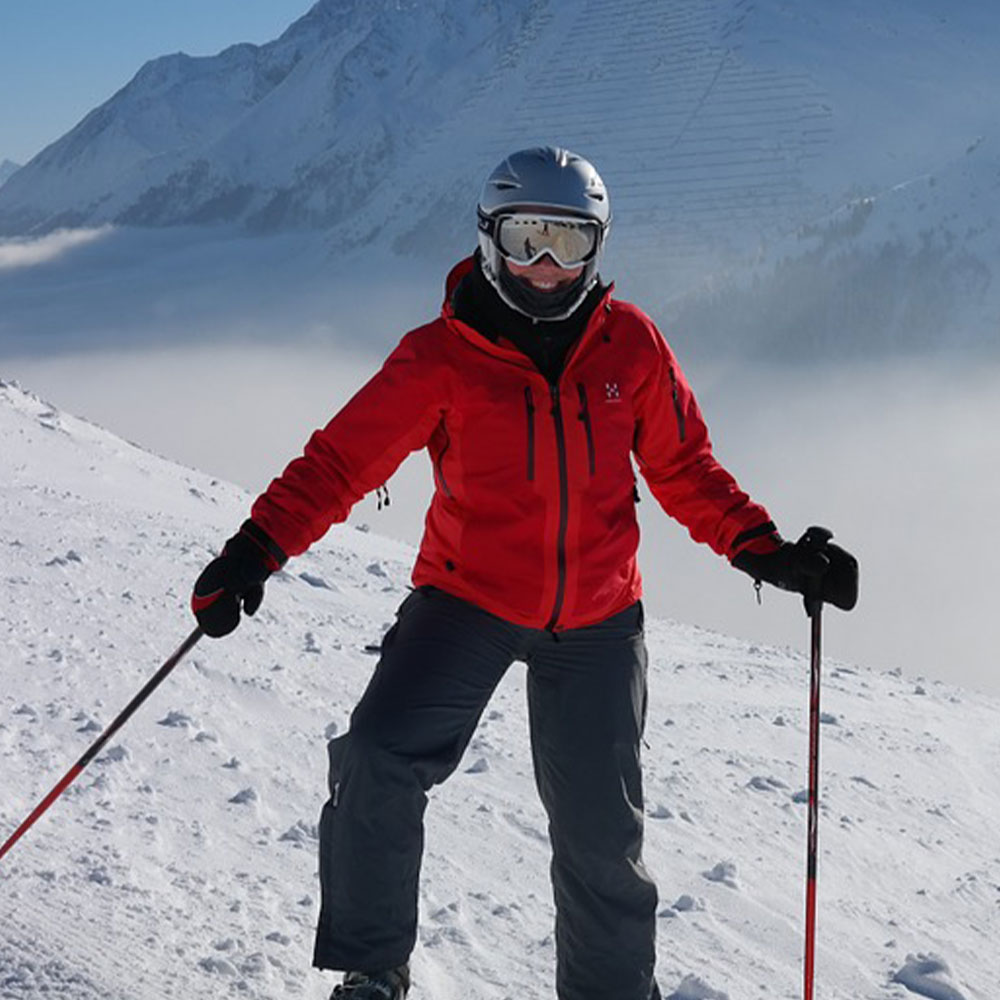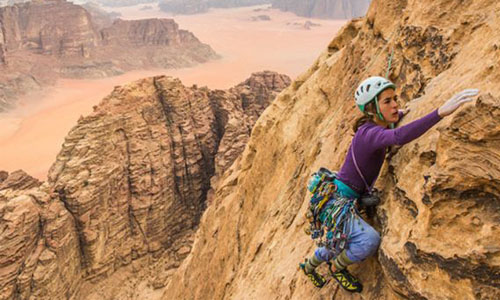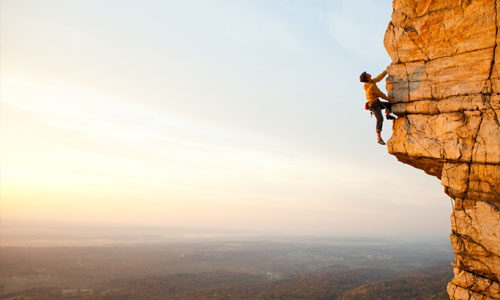8 Ways to Take Care of Your Hands while Climbing
Author

A keen runner, skier and nuts about cycling. Karl lives in Cumbria, where he loves encouraging his two children to follow in his outdoor lifestyle. Whilst out and about keeping active, Karl keeps a diary and shares it with Outdoor Look.
 Skin is the largest organ in a human body and is meant to be nourished and taken care of. Scraping, blisters and injuries are inevitable while climbing, and many climbers take pride in that. One should be prepared for the injuries that may come your way. Here are a few ways in which you can be ready to prevent and deal with injuries.
Skin is the largest organ in a human body and is meant to be nourished and taken care of. Scraping, blisters and injuries are inevitable while climbing, and many climbers take pride in that. One should be prepared for the injuries that may come your way. Here are a few ways in which you can be ready to prevent and deal with injuries.
1. Trim Your Nails
Not trimmed your nails in a while? Make sure they're freshly trimmed before you start climbing. The last thing you want is your nails getting messed up while you're hanging onto the rocks, and if you're not careful you'll end up ripping one of them off - not a nice experience, trust me. It's horrible to think about, but that's why you need to trim them nice and short before you head out.
2. Hydrate the skin
Moisturize your hands well, a few hours prior to the climb. It is easier for the skin to tear if it's not adequately moisturised. The moisturisation should not be done just before the climb - you need to give some time for your skin to absorb the moisturiser.
3. Tape it Up
Climber’s tape will be your best friend in the initial climbs. Make sure you secure your hands right before the process. Wrap it well around the lower third of your ring and middle fingers for better protection as you train with the ropes. Do not completely rely on it, to save your skin, and do not completely cover up.
4. Avoid the Climb when in Pain
Keep a check on yourself throughout the climb. Do not climb despite the pain. In case you experience a cramp, stop and try flexing or shaking your hands on the wall. But if your hands still hurt, quit the journey and prepare to head back.
5. Chalk it Up
Use Chalk on your hands. Applying chalk makes the climb easier, as it prevents your hands from slipping. Professional climbers do not use chalk much as they are super skilled and have excellent grip. Rub the chalk over your palms and fingers before heading up for any big route. You may try liquid chalk, if your hands tend to sweat a lot. The liquid chalk will help you dry out your skin quickly.
 6. Heal the Flappers
6. Heal the Flappers
The majority of beginners face ‘flappers’ that can be quite painful. These are bits of loose skin that rip off and may or may not bleed. Flappers are caused when soft skin pulls too hard on the spiky rock. You should immediately tape the flapper and clean it up. Keep the tape on during the climb as the skin takes time to heal.
7. Dealing with callouses
Regular climbers tend to have cracked skin and thick callouses. Avoid slathering too much moisturizer or your skin will soften up and you will lose the protective layer of your hard skin. There are various options of balms that are specially for climbing injuries and will heal the targeted areas.
8. Regularly File the Skin
Getting blisters is unavoidable in climbing. After a certain time, the blisters will transform into strong and healthy calluses. As a frequent climber, it is important for you to keep the calluses flat and smooth or else you might fray and rip.
Now that you know the tricks to keep the epidermal layer smooth and healthy, gear it up for the greatest adventure of your life.
Author

A keen runner, skier and nuts about cycling. Karl lives in Cumbria, where he loves encouraging his two children to follow in his outdoor lifestyle. Whilst out and about keeping active, Karl keeps a diary and shares it with Outdoor Look.
Categories
- Sport (28)
- Product Reviews (3)
- Team Outdoor Look (7)
- Mike Wild (2)
- Mike Payton (2)
- Suse Hammond-Pears (3)
- Snowboarding (12)
- Latest Offers (105)
- Shop Talk (1)
- Competitions (7)
- Walking (413)
- Lifestyle Fashion (8)
- Travel (86)
- Kit Guides (176)
- Workwear Clothing (6)
- Safety Workwear (4)
- Health/Fitness (289)
- Skiing (91)
- Great Outdoors (1316)
- Cycling (92)
- January 2025
- December 2024
- November 2024
- October 2024
- September 2024
- August 2024
- July 2024
- June 2024
- May 2024
- April 2024
- March 2024
- February 2024
- January 2024
- December 2023
- November 2023
- October 2023
- September 2023
- August 2023
- July 2023
- June 2023
- May 2023
- April 2023
- March 2023
- February 2023
- January 2023
- December 2022
- November 2022
- October 2022
- September 2022
- August 2022
- July 2022
- June 2022
- May 2022
- April 2022
- March 2022
- February 2022
- January 2022
- December 2021
- November 2021
- October 2021
- September 2021
- August 2021
- July 2021
- June 2021
- May 2021
- April 2021
- March 2021
- February 2021
- January 2021
- December 2020
- November 2020
- October 2020
- September 2020
- August 2020
- July 2020
- June 2020
- May 2020
- April 2020
- March 2020
- February 2020
- January 2020
- December 2019
- November 2019
- October 2019
- September 2019
- August 2019
- July 2019
- June 2019
- May 2019
- April 2019
- March 2019
- February 2019
- January 2019
- December 2018
- November 2018
- October 2018
- September 2018
- August 2018
- July 2018
- June 2018
- May 2018
- April 2018
- March 2018
- February 2018
- January 2018
- December 2017
- November 2017
- October 2017
- September 2017
- August 2017
- July 2017
- June 2017
- May 2017
- April 2017
- March 2017
- February 2017
- January 2017
- December 2016
- November 2016
- October 2016
- September 2016
- August 2016
- July 2016
- June 2016
- May 2016
- April 2016
- March 2016
- February 2016
- January 2016
- December 2015
- November 2015
- October 2015
- September 2015
- August 2015
- July 2015
- June 2015
- May 2015
- April 2015
- March 2015
- February 2015
- January 2015
- December 2014
- November 2014
- October 2014
- September 2014
- August 2014
- July 2014
- June 2014
- May 2014
- April 2014
- March 2014
- February 2014
- January 2014
- December 2013
- November 2013
- October 2013
- September 2013
- August 2013
- July 2013
- June 2013
- May 2013
- April 2013
- March 2013
- February 2013
- January 2013
- December 2012
- November 2012
- October 2012
- September 2012
- August 2012
- July 2012
- June 2012
- May 2012
- April 2012
- March 2012
- February 2012
- January 2012
- December 2011
- November 2011
- October 2011
- September 2011
- August 2011
- May 2010
- April 2010
- March 2010
- February 2010
- January 2010
- November 2009
- October 2009
- September 2009
Submit a Comment